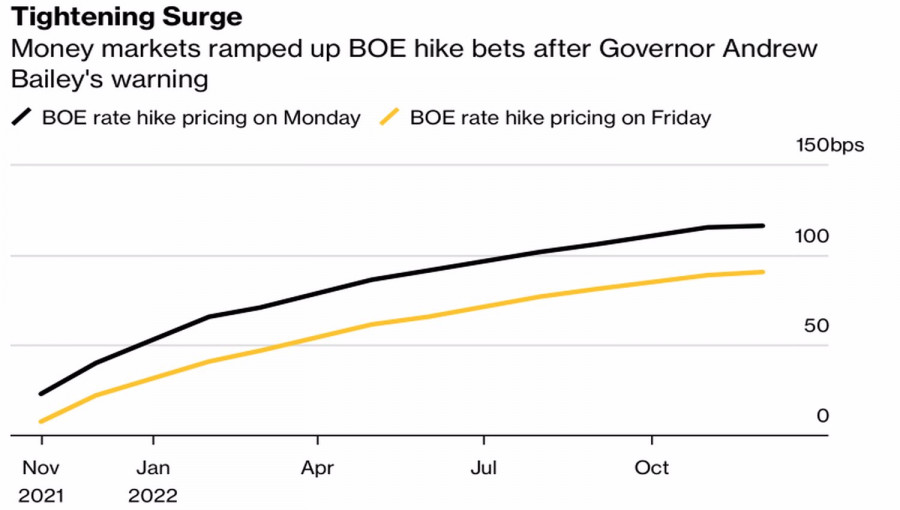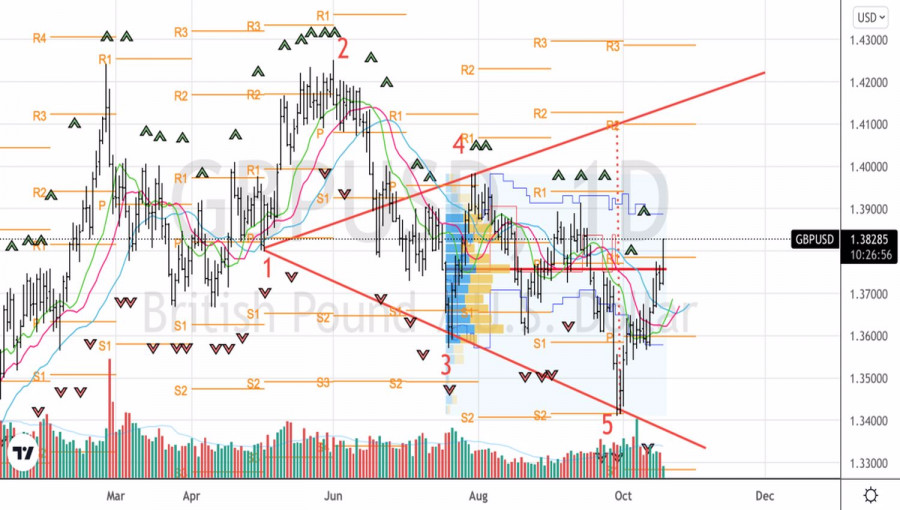Andrew Bailey's announcement that the Bank of England will have to act has rattled financial markets. United Kingdom 2-year bond yield jumped above 0.72%, the highest in two years, while GBPUSD soared to its highest peak since mid-September. Markets include expectations of the imminent start of BoE monetary restriction in the quotes of their instruments, which cannot but affect the exchange rate.
Less than a month ago, investors were confident that the first repo rate hike would take place in mid-2022. However, the soaring inflation rate of 3.2% in August and the energy crisis have seriously changed market pricing. Following Bailey's comments, borrowing costs are expected to rise by 15 points in November and another 25 points in December. By the end of next year, the BoE rate could reach 1.25%, the highest level since the 2008-2009 crisis. In addition, the 1% threshold, at which the Bank of England can afford to roll back its quantitative easing programme, will be exceeded.
Trends in expectations of a monetary tightening by the Bank of England

Opponents of monetary tightening are reporting a policy mistake by Andrew Bailey and his colleagues. Although the BoE chief cited rising energy prices, which threaten to accelerate inflation above 4%, when justifying his claim to act, sceptics doubt that an increase in the repo rate can reverse the process. This could happen if domestic demand is threatened, which could result in new monetary stimulus measures.
The state of the UK economy does leave a lot to be desired. Bloomberg's GDP forecast for 2021 was lowered to 5.1% by 0.4 points. It is the most serious worsening of estimates for any European economy. The Treasury, headed by Rishi Sunak, intends to raise taxes, which will further slow down the gross domestic product. If the Bank of England starts to aggressively increase the repo rate in this situation, there will be a lot of problems. In case the UK bond yield curve inverts in the near future, it would signal an imminent recession.
However, with British inflation expectations rising at the fastest rate since 2008 and the challenge for the Bank of England to ensure that their rally does not become a self-fulfilling forecast and lead to sustained high inflation of 4% and above, the increased possibility of a repo rate hike in November as well as a sharp rise in the GBPUSD quotes seem logical. Investors have already taken into account the start of the rollback of QE in November.
On the daily chart of the pair, there is a Woolf Wave pattern with a target at 1.41. It is advisable to buy the pound against the US dollar on a pullback.
GBPUSD, daily chart

